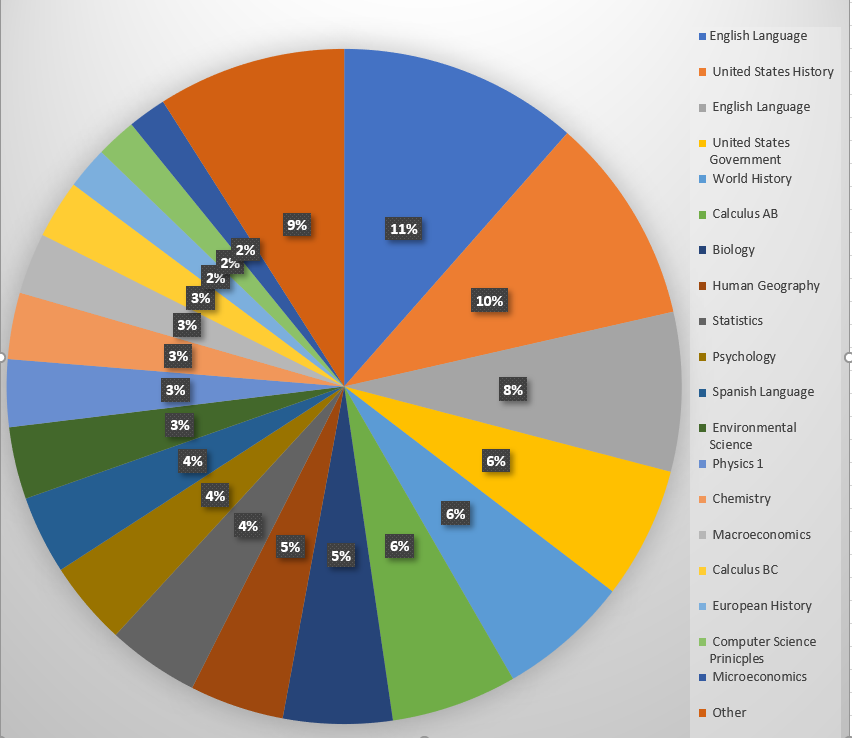|
Advanced Placement German Language
Advanced Placement (AP) German Language and Culture (also known as AP German Language or AP German) is a course and examination provided by the College Board through the Advanced Placement Program. This course is designed to give high school students the opportunity to receive credit in a college-level German language German ( ) is a West Germanic languages, West Germanic language mainly spoken in Central Europe. It is the most widely spoken and Official language, official or co-official language in Germany, Austria, Switzerland, Liechtenstein, and the Ita ... course. It is generally taken in the fourth year of high school German study. Exam The AP German Language and Culture exam administered around the end of the academic year is split into two parts, a multiple choice section and a free response section, each with equal value in the overall exam score. Format Grade distribution The grade distributions for the AP German Language and Culture exam since 2012 are: ... [...More Info...] [...Related Items...] OR: [Wikipedia] [Google] [Baidu] |
College Board
The College Board is an American nonprofit organization that was formed in December 1899 as the College Entrance Examination Board (CEEB) to expand access to higher education. While the College Board is not an association of colleges, it runs a membership association of institutions, including over 6,000 schools, colleges, universities, and other educational organizations. The College Board develops and administers standardized tests and curricula used by K–12 and post-secondary education institutions to promote college-readiness and as part of the college admissions process. The College Board is headquartered in New York City. David Coleman has been the CEO of the College Board since October 2012. He replaced Gaston Caperton, former Governor of West Virginia, who had held this position since 1999. The current president of the College Board is Jeremy Singer. In addition to managing assessments for which it charges fees, the College Board provides resources, tools, and service ... [...More Info...] [...Related Items...] OR: [Wikipedia] [Google] [Baidu] |
Advanced Placement
Advanced Placement (AP) is a program in the United States and Canada created by the College Board which offers college-level curricula and examinations to high school students. American colleges and universities may grant placement and course credit to students who obtain high scores on the examinations. The AP curriculum for each of the various subjects is created for the College Board by a panel of experts and college-level educators in that field of study. For a high school course to have the designation, the course must be audited by the College Board to ascertain that it satisfies the AP curriculum as specified in the Board's Course and Examination Description (CED). If the course is approved, the school may use the AP designation and the course will be publicly listed on the AP Course Ledger. History After the end of World War II, the Ford Foundation created a fund that supported committees studying education. The program, which was then referred to as the "Kenyon Plan", ... [...More Info...] [...Related Items...] OR: [Wikipedia] [Google] [Baidu] |
German Language
German ( ) is a West Germanic languages, West Germanic language mainly spoken in Central Europe. It is the most widely spoken and Official language, official or co-official language in Germany, Austria, Switzerland, Liechtenstein, and the Italy, Italian province of South Tyrol. It is also a co-official language of Luxembourg and German-speaking Community of Belgium, Belgium, as well as a national language in Namibia. Outside Germany, it is also spoken by German communities in France (Bas-Rhin), Czech Republic (North Bohemia), Poland (Upper Silesia), Slovakia (Bratislava Region), and Hungary (Sopron). German is most similar to other languages within the West Germanic language branch, including Afrikaans, Dutch language, Dutch, English language, English, the Frisian languages, Low German, Luxembourgish, Scots language, Scots, and Yiddish. It also contains close similarities in vocabulary to some languages in the North Germanic languages, North Germanic group, such as Danish lan ... [...More Info...] [...Related Items...] OR: [Wikipedia] [Google] [Baidu] |
German Language In The United States
Over 50 million Americans claim German ancestry, which makes them the largest single claimed ancestry group in the United States. Around 1.06 million people in the United States speak the German language at home. It is the second most spoken language in North Dakota (1.39% of its population) and is the third most spoken language in 16 other states. History Ever since the first ethnically German families settled in the United States in Jamestown, Virginia, in 1608, the German language, dialects, and traditions of Germany have played a role in the social identity of many German-Americans. By 1910, an accounted 554 newspaper issues were being printed in the standard German language throughout the United States as well as a number of schools which taught in German with class-time set aside for English learning. As a result of anti-German sentiment during WWI, the use of German declined. The daily use would recede to primarily Amish, Old Order Mennonite and Hutterite communities ... [...More Info...] [...Related Items...] OR: [Wikipedia] [Google] [Baidu] |


